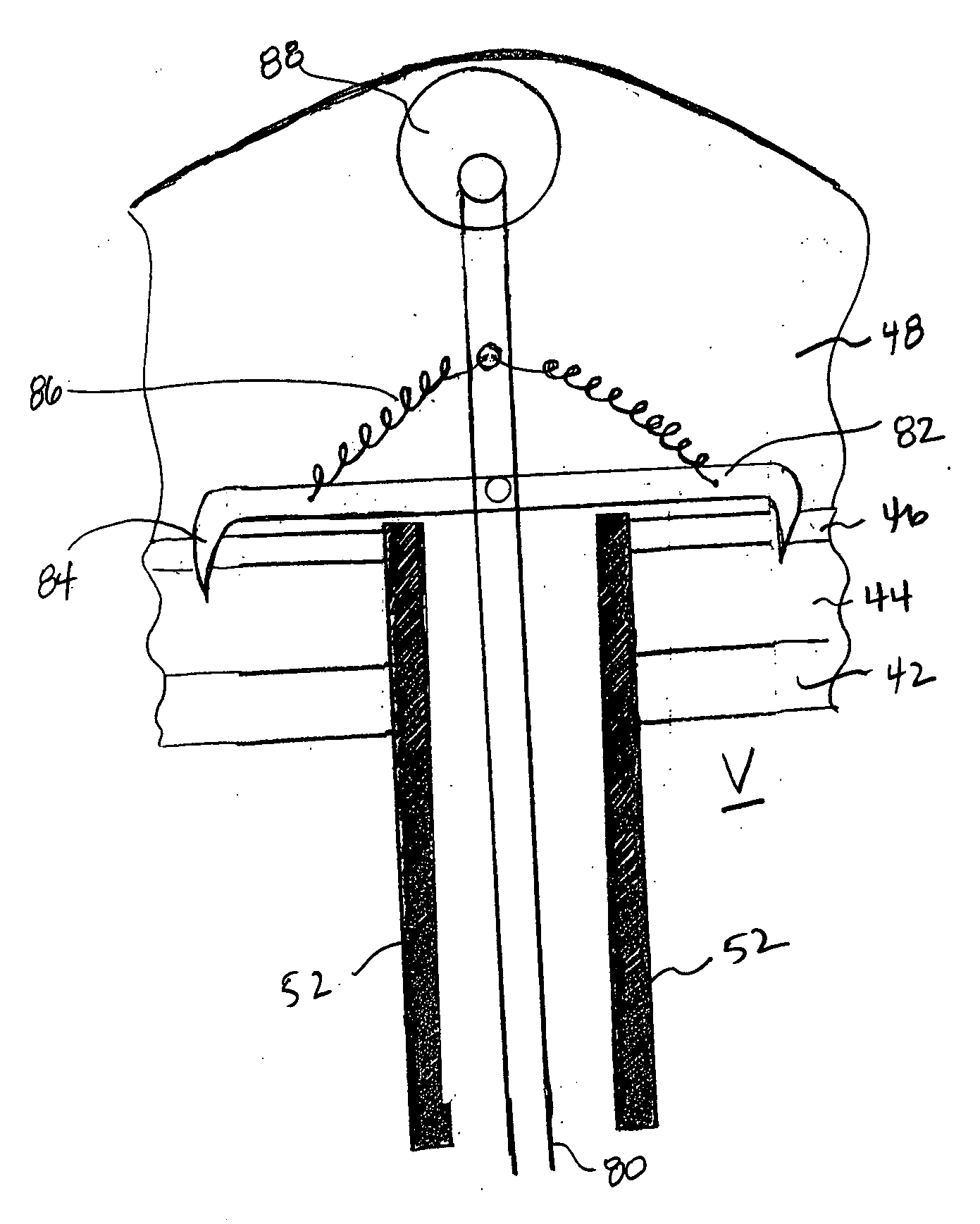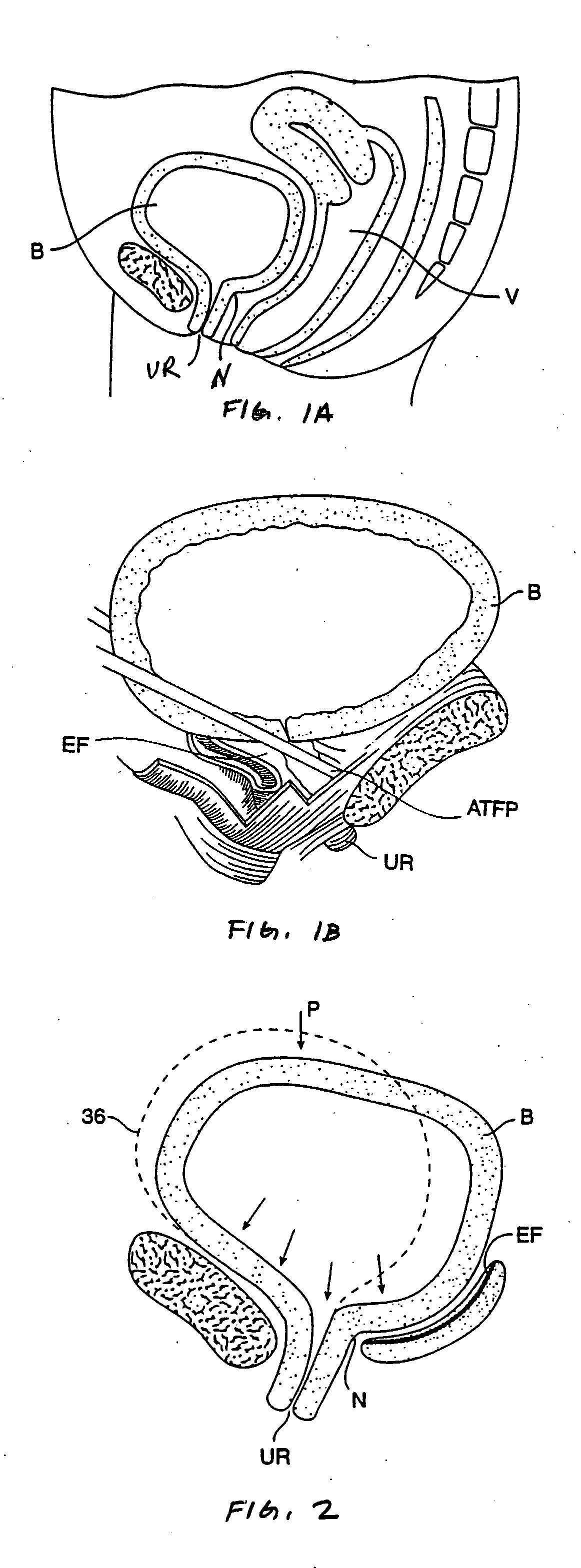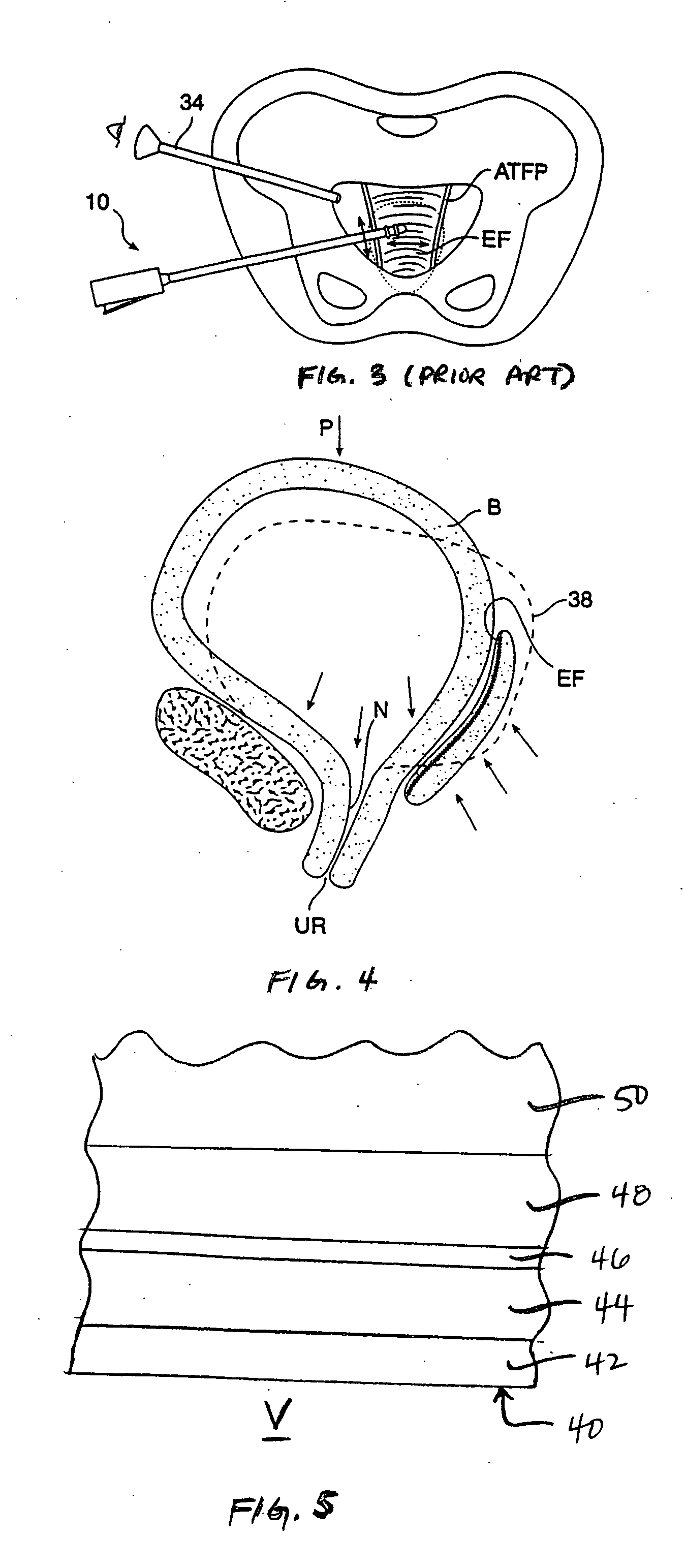Endo-pelvic fascia penetrating heating systems and methods for incontinence treatment
a technology of endopelvic fascia and heating system, which is applied in the field of treatment of urinary incontinence, can solve the problems of urinary sphincter mechanical damage, urinary leakage typically occurring when the patient's abdominal pressure increases, etc., and achieves the effect of simple and reliable placement and enhances both safety and efficacy of such retrograde methods
- Summary
- Abstract
- Description
- Claims
- Application Information
AI Technical Summary
Benefits of technology
Problems solved by technology
Method used
Image
Examples
Embodiment Construction
[0029]FIG. 1A illustrates a cross-sectional view showing the urinary bladder B, urethra UR, bladder neck N, and vaginal cavity V. Pelvic tissue support structures which generally maintain the position of the urinary bladder B, urethra UR, and bladder neck N are illustrated in FIG. 1B. The endo-pelvic fascia EF defines a hammock-like structure which extends between the arcus tendineus fascia pelvis ATFP. These latter structures extend substantially between the anterior and posterior portions of the pelvis so that the endo-pelvic fascia EF largely defines the pelvic floor.
[0030] Referring now to FIG. 2, a cross-sectional view of a patient suffering from urinary stress incontinence due to inelastic stretching of the endo-pelvic fascia is illustrated. In particular, bladder B can be seen to have dropped from its nominal position, as shown in phantom by outline 36. While endo-pelvic fascia EF still supports bladder B to maintain continence when the patient is at rest, a momentary pulse ...
PUM
 Login to View More
Login to View More Abstract
Description
Claims
Application Information
 Login to View More
Login to View More - R&D
- Intellectual Property
- Life Sciences
- Materials
- Tech Scout
- Unparalleled Data Quality
- Higher Quality Content
- 60% Fewer Hallucinations
Browse by: Latest US Patents, China's latest patents, Technical Efficacy Thesaurus, Application Domain, Technology Topic, Popular Technical Reports.
© 2025 PatSnap. All rights reserved.Legal|Privacy policy|Modern Slavery Act Transparency Statement|Sitemap|About US| Contact US: help@patsnap.com



